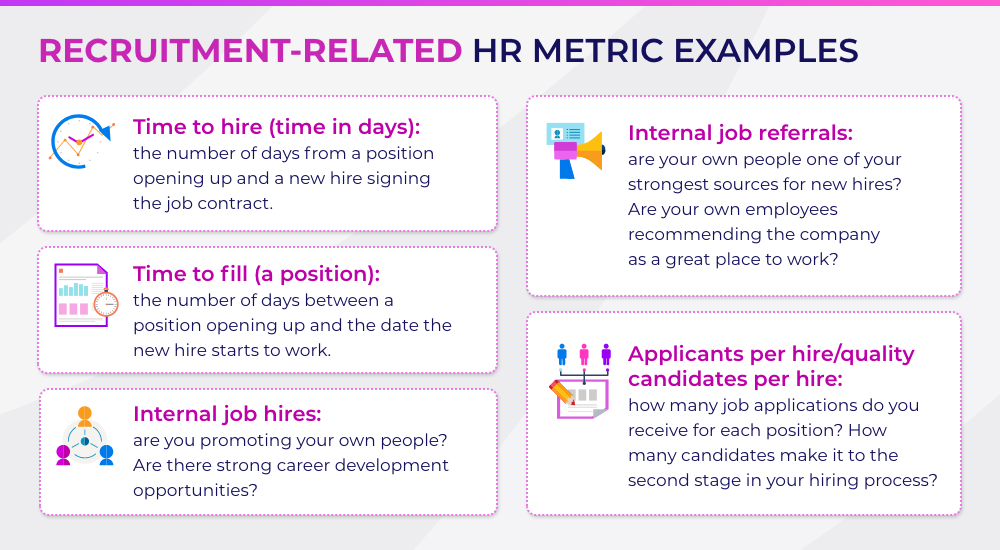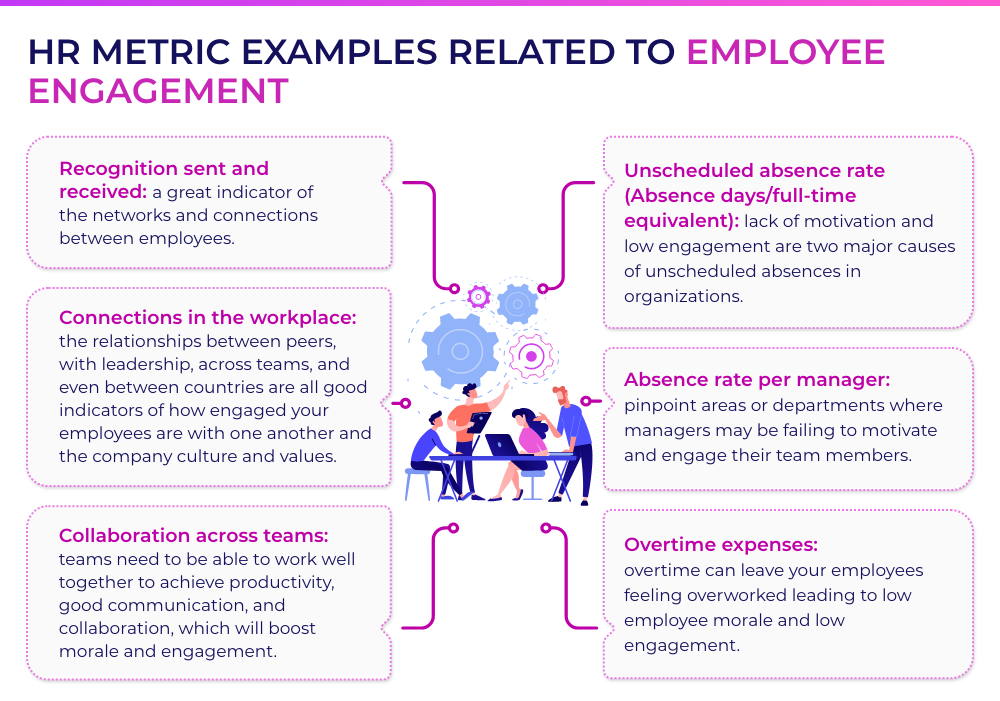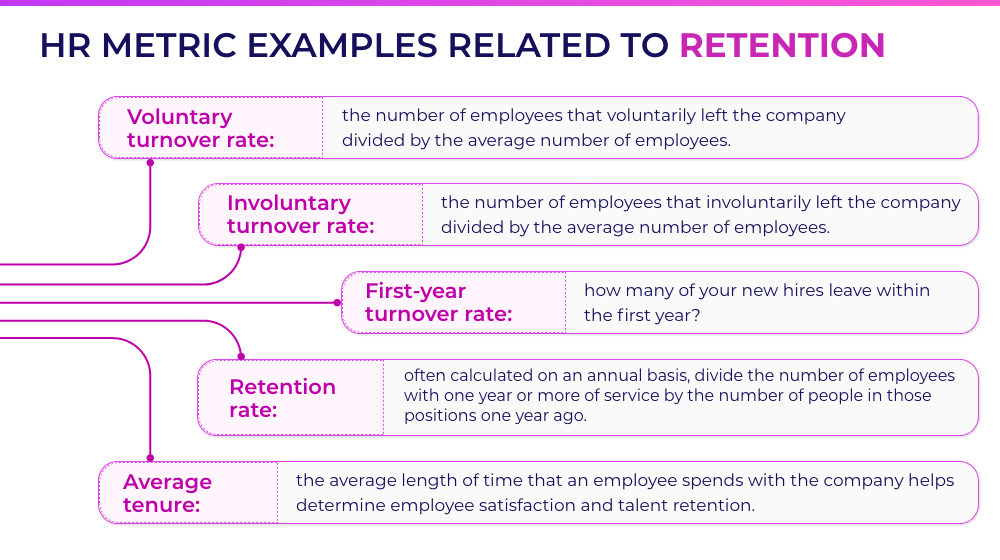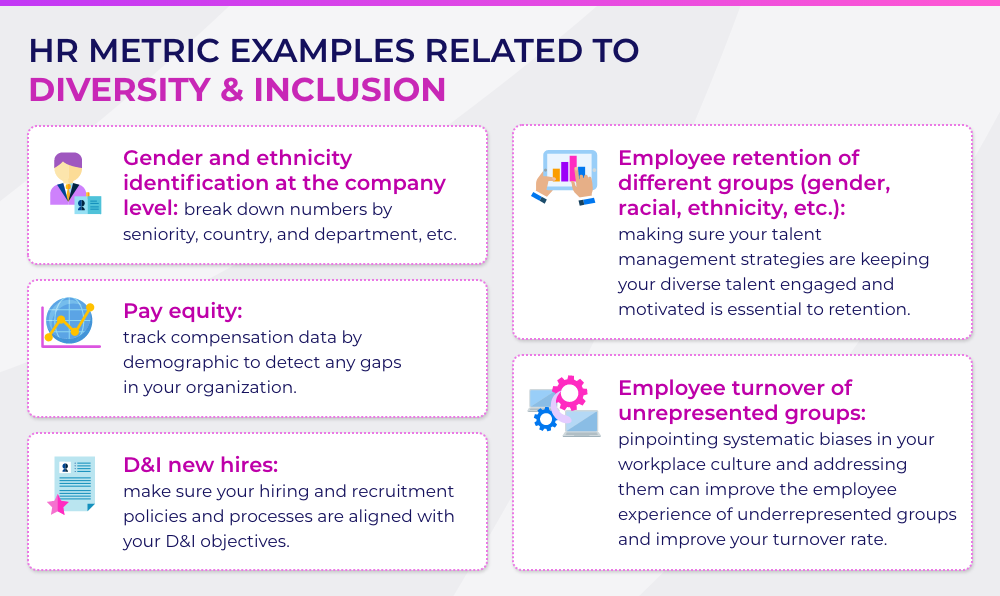Top four HR KPIs for data-driven HR decisions
Behind every great HR KPI are several HR metrics. We’ve picked out our favorites that will track your employee experience from employee engagement to diversity & inclusion.
As the world continues to adjust to the impact of Covid-19 on how—and from where—we work, several HR KPIs have become more critical than ever before from both an operational as well as a wellbeing perspective. Leaders and managers are turning to a wide range of human resource metrics to give them actionable insights so they can make more effective and timely data-driven HR decisions.
But faced with dozens, if not hundreds, of possible metrics to track, how do leaders decide which ones to focus on?
Based on the understanding of KPIs as the numbers (or quantitative values) that tell us if we are reaching our targets or goals, the immediate question is: what are my critical HR targets? What are my organization’s top HR goals for 2021? The answers to both those questions will help you define what HR metrics you should be tracking and which ones are your HR KPIs.
So before we dive into the top four HR KPIs—and their related HR metrics—we’ve chosen as the ones every HR leader should be tracking, let’s talk about HR metrics versus HR KPIs.
What are HR metrics?
Basically, not every metric is a KPI, but every KPI is a metric. HR metrics used for tracking the different processes may include revenue per employee or performance turnover. Whereas an HR metric like ‘Diversity & Inclusion hires’ may be flagged as an HR KPI because the organization has set specific business targets related to gender equity or racial diversity.
The technological solution you use to track your HR metrics will also help determine which ones you can and should be keeping track of. In the case of StarMeUp, a culture technology platform, the many human resource metrics tracked are tied to KPIs like feedback, engagement, connectivity, attrition, and diversity and inclusion, pillars of a strong organizational culture. The platform tracks hr metric examples like connectivity between coworkers, adoption of culture technology, sense of belonging, integration between different teams and countries, high-performing employees, most connected leaders, collaborations across different roles, among others.
HR KPIs We Love to Measure
Understanding which HR metrics are tied to your business targets and objectives will allow you to identify which of them also represent your HR KPIs. We’ve highlighted four of our favorite HR KPIs and 20 examples of HR metrics.
HR KPI: Recruitment
Why should recruitment metrics tie into one of your HR KPIs? According to the Wall Street Journal, experts estimate it costs more than twice an employee’s salary to find and train a replacement. It’s a matter of your company’s bottom line. Moreover, HR Metrics related to recruitment are a great way to measure how your recruitment process is functioning. They can tell you if the process is efficient or help you gauge the level of difficulty when it comes to filling particular job positions. Overall, they can give you actionable insights to make the best of your resources and time.

HR KPI: Employee engagement
As the pandemic continues to run it’s course, some people are returning to work, others continue to work from home, and there are those who are working under a hybrid modality.
Remote work and hybrid models have forced many organizations to come up with new ways to measure employee engagement, especially one of the key HR metrics related to this essential KPI: employee absenteeism. Not only can unplanned absences represent enormous costs for organizations from a productivity standpoint, leaders know that it can reflect other deeper (detrimental) issues at play in the organizational culture.
Using technology, organizations can identify, manage, and potentially prevent occurrences of unplanned absence, voluntary turnover, and overtime expenses. Using the analytics features that automate the tracking of many metrics provide actionable insights about how employees connect and interact with one another.

HR KPI: Retention
Retention is an indicator of the stability of your workforce. However, calculating how many of your employees have remained with your organization over a specific period, is just part of the story. Calculating employee turnover is a critical task. High employee turnover can be caused by low morale and ineffective talent management strategies. But it could also be the sought-out result of an effective HR strategy targeting low performing individuals with poor productivity rates.
Rather than focus just on how many people are leaving annually, the better question for HR managers to ask is: who is leaving the organization? Are they top producers or low performers? It isn’t just a matter of how many people are leaving your organization, it’s who is choosing to leave.
Employee satisfaction (happy employees are less likely to quit), compensation, professional development opportunities, the economy, and retirement ages are just some of the factors at play.
As we saw above, it’s expensive to hire replacements. It’s also time consuming, especially the hiring, onboarding and initial job training. And, finally, it’s disruptive.

HR KPI: Diversity & Inclusion
Diversity and inclusion is integral to the overall employee experience. Not only do D&I talent management strategies need to address groups based on gender, race and ethnicity but also any other underrepresented groups within their multigenerational workforce, including sexual orientation, physical ability, experience, religion, education, politics and socio-economic status.
Are there any organizational practices perpetuating bias? Are your D&I metrics uniform across your organization? Where are there gaps? What is driving those gaps?
We didn’t leave this HR KPI for last for just any reason. Almost every single HR Metric we named under the other four HR KPIs can also be tracked with a D&I filter.

Ready, Set, Start Measuring
Recognizing what are HR metrics’ contribution to better understanding the experience of your employees in your organization is key to making better data-driven HR decisions. Part of that process is choosing metrics and KPIs that matter to them and are aligned with your corporate values. Equally important is choosing a technological platform that will not only help you measure and track those metrics but is also geared toward what is important to your employees and aligned with your company values.